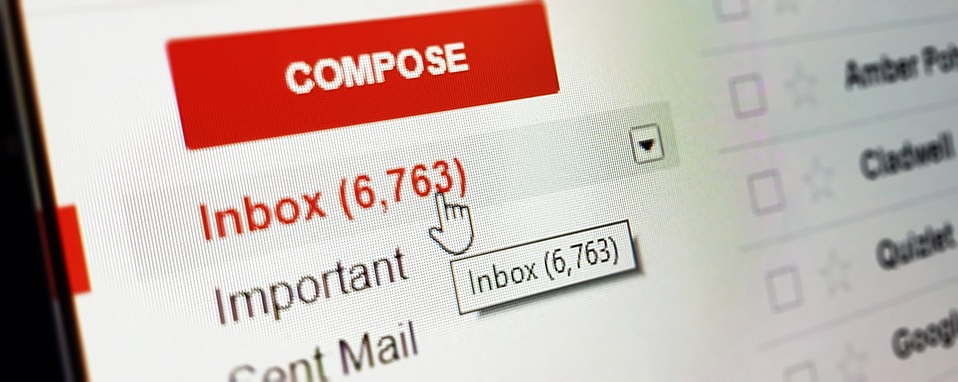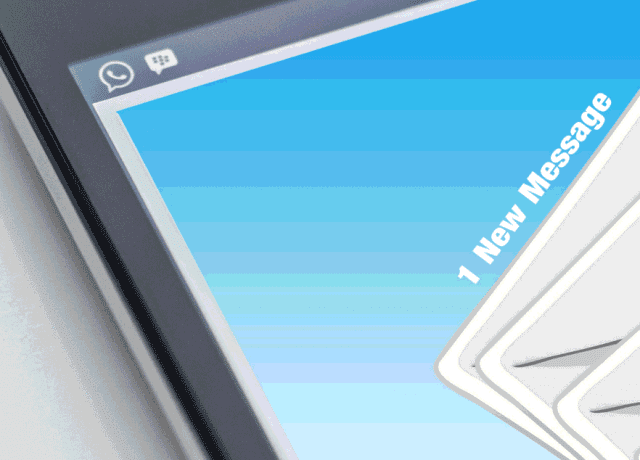It’s a simple, yet true notion… You’ll never make the sale if no one reads your email.
For ad sales reps, an email is often the first touchpoint when reaching prospects. Like most of us, however, prospect email inboxes can be chaotic and overflowing. In fact, most prospects receive more than 200 emails a day.
So then, the question becomes, how do you stand out amongst the others in such a hectic environment?
There are a combination of email characteristics that will lead to your emails being opened, and more importantly, to your emails being read.
Below are 8 tips to create an effective sales email – one that your prospects actually want to read:
1. Time it Right
Experiment with different times of the day. Statistically speaking, Tuesdays through Thursdays are the best days to send emails to your prospects.
There’s also something to be said about the famous phrase, “The early bird gets the worm.”
Early-morning emails from 6-8 a.m. typically garner more clicks, because it’s the first thing you’re prospect sees when they wake up in the morning.
Emails sent in the evening between 7-8 p.m. also tend to have a high success rate.
It’s important to know your prospect’s schedule and experiment with different send times to connect with them when they most prefer.
2. Don’t Neglect the Subject Line
So you’ve sent your email at the optimal time… By no means does that ensure your email will be opened, however.
The subject line is one of the biggest factors in how professionals prioritize their email. Be clear, to the point, and catch their eye.

One best practice is to think of your subject line as a 61-70 character text message. What key points would you want to relay to someone within those 70 characters?
Adding numbers to the subject line can also increase your open rates. A number will catch the eye of the reader.
For example, “Five Ways to Increase Your Brand’s Reach,” will likely garner more opens than simply, “Increase Your Brand’s Reach.”
It’s important to be memorable and actionable, and to let your personality come through in your subject line. Don’t be afraid to be natural or humorous.
For example, one subject line that we’ve used in the past, is “I swear I’m not a stalker…”
3. Lead with the Answer
Decision makers are extremely busy.
Make emails easy for them to read. Try to write no more than two paragraphs in length, without exceeding four lines per paragraph. If you have a lot to say, use bullet points.
Part of this is jumping to the conclusion. Don’t wait to give the reader the answer. Lead with the main point, your solution, in the very first sentence. This raises the odds that your email will be read.
Don’t bury the lead in the middle of the email. In a sense, you need to lead with the lead…
4. Customize
Customization takes time, but it also creates results.
Personalize the note to your prospect and their business needs.
The average prospect gets at least 17 unsolicited emails per day. Using the same exact email for multiple prospects probably won’t raise a ton of interest, or get many responses.
Intrigue your prospect with customized solutions, like a special feature that highlights editorial related to a brand. Too often we focus on broad strokes, but taking time to relate your product to a specific need can really pay off in a big way.
Even in a world where sales and marketing emails can be automated, it is still very possible to customize in mass.
5. Be Visual
A picture is worth a thousand words.
For emails, that sentiment certainly rings true. Add a fun image to capture your prospect’s attention.
GIFS are also a great way to get your point across and let your personality shine.
For example, publishers could include an ad mock-up to showcase how a brand’s creative would look on their website.
This helps a marketer quickly visualize their ad surrounded by the perfect editorial content for their advertising message.
6. Be Their Concierge
Help advertisers overcome their marketing challenges and build trust by offering helpful content and learning tools.
Send prospects or current clients useful information for yearly planning, like an editorial calendar highlighting the issues you think are most valuable to them.
Finally, prove to them it works. Provide stats from a previous campaign with recommendations for optimization. It’s no secret that marketers are focused on ROI, and want to optimize for better results.
7. Make it Actionable
Include a clear call-to-action or response deadline to nudge your prospect in the right direction. If you’re trying to schedule a call, be sure to suggest a few different possible call times.

Furthermore, don’t give too many options, as you might appear desperate. Prospects will wonder why they should speak with you if no one else appears to be doing so.
We mentioned the importance of leading with the answer. In making that answer actionable, however, it’s important to immediately relate strongly to your prospect’s brand.
Give them a reason to participate. For example, will there be additional sponsorship opportunities at an event, giving them more bang for their buck? Relate to them, and be specific.
Let’s say you’re an ad sales rep selling ad space to an advertiser. Be specific about your offering, but also be specific in giving them deadlines, to create urgency, and thus action. Deadlines help busy professionals prioritize.
8. Follow Up with a Phone Call
Always follow up within a day with a personalized phone call.
Too often, we fall into a rut of email communication. While email is a valuable tool, picking up the phone will build a stronger relationship, and will help you get an answer faster.
All too often, it takes days to discuss something that can be resolved with a simple 10-minute conversation.
However, before you call, have something compelling to say to your prospects. Demonstrate that you know their products, target market, advertising mix and goals.
When communicating with a prospect or an existing advertiser, a good rule of thumb is to give information in order to get information. Have a conversation.
Provide insights that help make them smarter about their brand or industry. Become a trusted resource before you ever ask them to buy from you.
Regardless of what medium you’re using to communicate, it’s most important to build trust and be truly useful for your prospect.
For more ad sales info and insights, be sure to visit our blog and newsroom!



